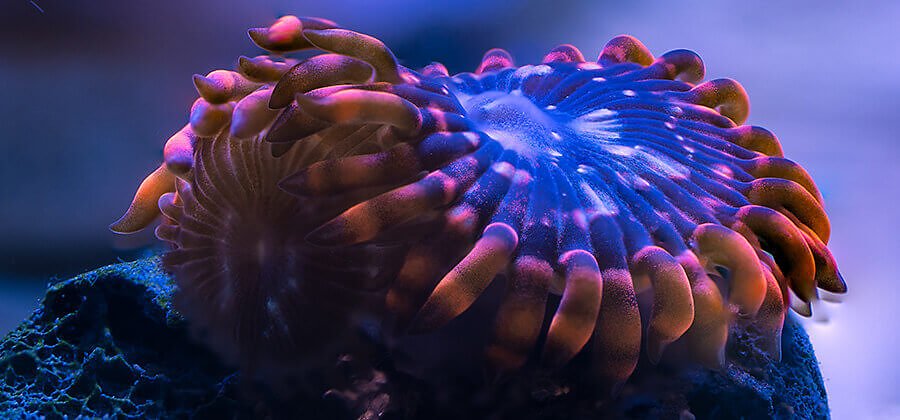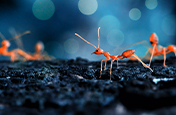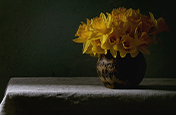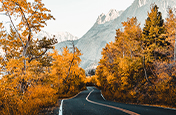Use focus stacking to get multiple subjects in focus within one image.
Focus stacking images in post-processing can make every object within one picture sharp across multiple focal points. Try this technique to create images that are crystal clear.

What is focus stacking?
You may have looked at a scene with your eyes and wondered why it looks different in the photo you took. This is because, especially with a longer focal length or a shallow depth of field, not everything in a single image can be in focus at once. Whereas your eyes immediately adjust their focus as you look from area to area, a photo must focus on just one area at a time. Professional photographers use a technique called focus stacking to portray multiple objects in focus on various focal planes in one sharp image where everything is in focus, essentially mimicking a greater depth of field without any loss of definition.
Focus stacking can be a key tool in product photography, macrophotography, landscape photography and other areas where a sharp focus across the entire image would make your photo stand out. “The goal of focus stacking is to take a photo of as many in-focus slivers as you can and then Photoshop matches them together into a fully in-focus composite image,” explains photographer Nick Ulivieri. “It looks more polished, more real. So real, it almost looks fake.” In Adobe Photoshop Lightroom, you can focus stack by using Auto-Blend Layers on several images to create one final image with crisp lines.

Focus stacking in landscape photography.
“If your goal is to have everything tack sharp, you’ll never get that all in the camera,” says adventure photographer Jason Weingart. “For a landscape focus stack, I would typically do one photo focused on the foreground, another where I focused on the middle ground, then one more focused on the background and then I’d put those three together.”
Focus stacking in product photography.
Studio photographer Nicolle Clemetson explains the necessity of focus stacking in close-up commercial product photography. “Say you’re shooting a pattern of cosmetics laid out. The client would want every single product to be in focus. So you’ll have to start with your focus on the front line, get a shot, move focus to the second line and so on until you capture a frame of each thing fully in focus. Then you stitch together an image where everything is sharp.”
How to focus stack in Photoshop Lightroom.
Focus stack in Lightroom by following the steps below to achieve a beautiful composite photo with seamless tones.

Plan ahead for compositing. “I engineer my shoot knowing that I’m going to be compositing in post,” Clemetson says. Shoot a series of images from the same angle and use manual focus on different areas as you go.

Select your photos in Lightroom. Load files you plan to stack into Lightroom. In the Grid view or the Filmstrip in the Library module, select the ones you want to stack. (They must be located in the same folder or the same collection.)

Choose Photo > Edit in > Open as Layers in Photoshop. The stacked photos will display an order number in the upper left corner of their thumbnails, with the top layer being photo 1 and so on.

Select the layers in the Layers panel. Choose Edit > Auto-Align Layers. Make sure that you have Auto selected in the Auto-Align Layers dialogue before pressing OK.

Select all the layers in the group. Choose Edit > Auto-Blend Layers. In the dialogue, select Stack Images and click OK. Now you have your focus-stacked image shown as a layer mask.
Try this focus-stacking technique with your mobile device.
If you have a macro lens attachment for your mobile device, you can try doing some quick focus-stacking product photography. Nick Ulivieri recommends locking down your device on a phone tripod first, which is how he achieved professional-looking product shots of a watch face using his iPhone. “You touch different areas of your phone screen to capture different focus points and it can be stacked in Photoshop in just a minute,” he says.
You can turn any typical set of frames into the sharpest shot worthy of a commercial website. “I fought it for a very long time, but then I kept seeing my colleagues find more and more success because they were focus stacking in post-production,” says Clemetson. Focus stacking will give your images an extra level of polish and surreal beauty that takes them from ordinary to extraordinary.

Image courtesy of Nick Ulivieri
Contributors
Do more with Adobe Photoshop Lightroom.
Edit photos easily with Lightroom presets, Super Resolution, easily share photos from any device and access your projects anywhere with cloud photo storage management.
You might also be interested in…
Journey to a new world and make small subjects larger than life with macro photography tips.
The art of still life photography
Improve your composition skills by learning the art of still life photography.
Building a great landscape photo.
Explore ways to artistically capture scenic views with tips on landscape photography.
Expert product photography tips.
Learn how to polish up your products and get tips for capturing great product photography.
Get Photoshop Lightroom.
Edit, organise, store and share photos from anywhere.
7 days free, then KD 2.900/mo.



